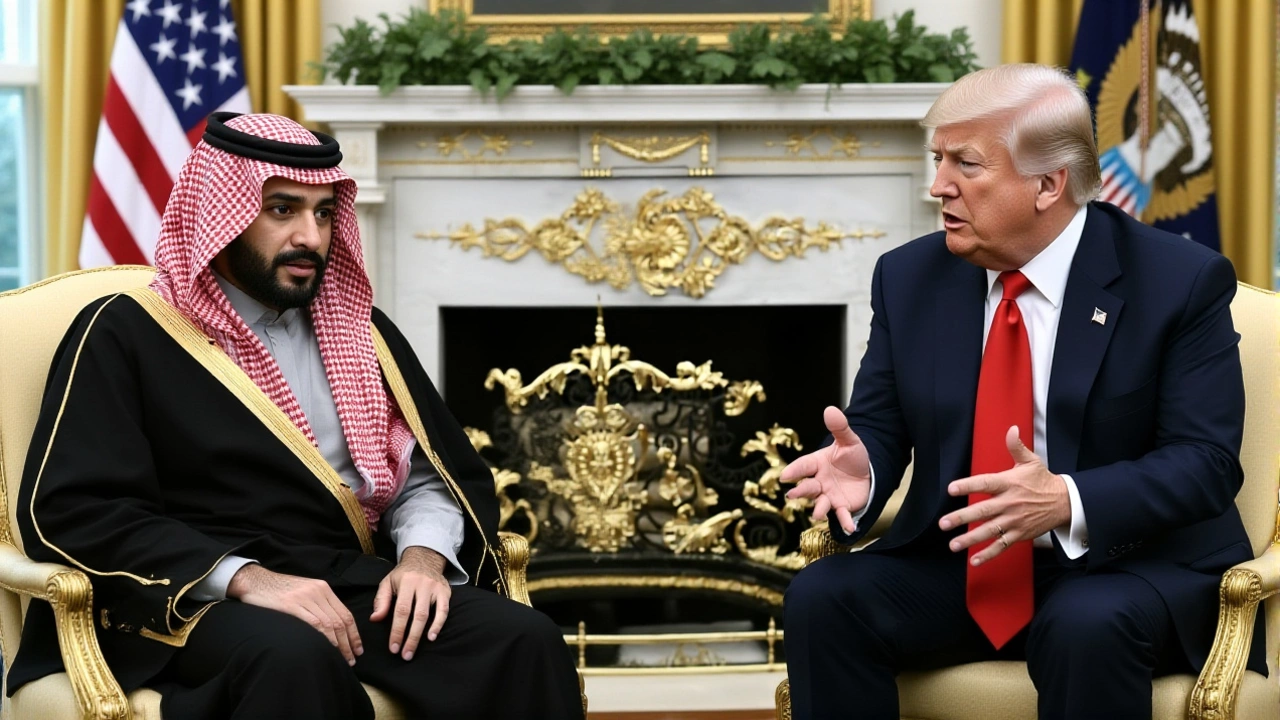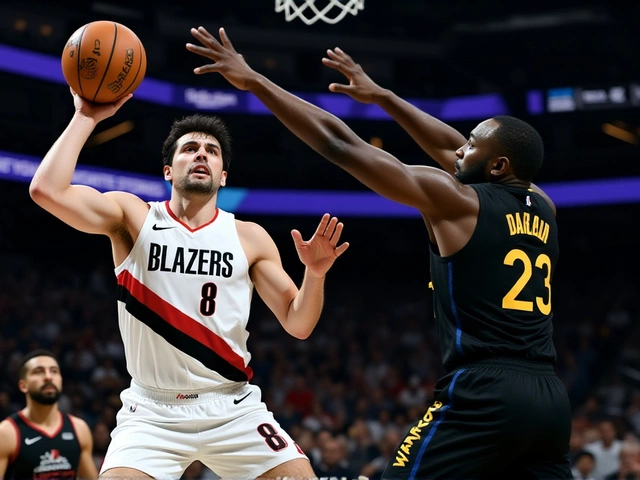On a crisp Tuesday in May 2025, Donald J. Trump stood in the Oval Office beside Crown Prince Mohammed bin Salman and announced what the White House called the largest economic partnership in U.S. history: a $600 billion commitment from Saudi Arabia to invest across American infrastructure, energy, and defense sectors. The deal, sealed during a high-profile visit to Washington D.C., marks a seismic pivot in U.S.-Middle East relations — and a stark reversal of the previous administration’s stance.
A Defense Deal Like No Other
At the heart of the agreement is a nearly $142 billion defense package — the biggest in U.S. foreign military sales history. It’s not just about weapons. It’s about building Saudi Arabia’s entire modern military ecosystem. The package breaks down into five core areas: air force and space capabilities, air and missile defense, maritime and coastal security, land forces modernization, and upgraded information systems. U.S. firms like Lockheed Martin, Raytheon, and Northrop Grumman are locked in for decades of sustainment work, with training programs extending to Saudi service academies and military hospitals.What makes this even more striking is that Saudi Arabia already holds the title of the U.S.’s largest Foreign Military Sales partner, with existing cases valued at over $129 billion. This new deal doesn’t just add to that — it redefines it.
From Pariah to Partner
Just four years ago, the relationship was in tatters. In 2021, the Biden administration publicly blamed Crown Prince Mohammed bin Salman for the 2018 assassination of journalist Jamal Khashoggi inside the Saudi consulate in Istanbul. Biden had campaigned on making Saudi Arabia a "pariah." Diplomatic ties hit their lowest point since the 1970s. The U.S. scaled back arms sales, paused high-level visits, and emphasized human rights as the cornerstone of foreign policy.Then came Trump’s return to the White House in January 2025. His first foreign trip? Riyadh. No conditions. No public rebukes. Just handshake deals and shared economic ambition. "We’re not here to lecture," Trump reportedly told MBS during their private dinner. "We’re here to build. Together."
What’s Not Said: The Security Guarantee Gap
Here’s the twist no one’s talking about enough: Defense Priorities, a Washington-based think tank, published a blunt analysis in November 2025 titled "Keep the U.S.-Saudi relationship modest." Their takeaway? "The U.S. declined to offer Saudi Arabia a security guarantee."That’s critical. In past alliances — think NATO or Japan — the U.S. offers a formal security umbrella. Here? Nothing. The Saudis are buying F-35s, Patriot batteries, and stealth drones… but they’re not getting a treaty. "The sale signals prestige," said Dan, an analyst cited by the Atlantic Council, "but little else. The U.S. previously approved F-35s for the UAE — then watered them down so much the UAE walked away. Same could happen here."
And yet, Saudi Arabia is moving forward anyway. Why? Because they see an opportunity. With China deepening ties across the Gulf, and Russia flexing in Syria and Africa, Riyadh is betting that Washington’s return to transactional diplomacy means more leverage — not less.

Who Wins? Who Loses?
The White House claims this deal will create 1.2 million American jobs over the next decade — from factory floors in Ohio to engineers in Texas. They point to the "joint vision for long-term prosperity" in their fact sheet. And yes, U.S. defense contractors are celebrating. Stock prices for key firms jumped 15% in the week after the announcement.But critics warn of hidden costs. The U.S. has no leverage to prevent Saudi Arabia from deepening defense ties with China or Russia. There’s no requirement to curb human rights abuses. No conditionality around Yemen. No commitment to transparency. "This isn’t partnership," said one former State Department official who spoke anonymously. "It’s a cash-for-weapons swap with zero accountability."
Meanwhile, Israel’s security establishment is quietly alarmed. The F-35 sale to Saudi Arabia — even if scaled back — threatens Israel’s long-standing Qualitative Military Edge (QME). U.S. law requires that any arms sale to a Middle Eastern country not undermine Israel’s military superiority. Whether that’s being honored? No one’s saying.
What Comes Next?
The next 18 months will be telling. Will the F-35 deal actually close? Will Congress push back on the scale of arms transfers? Will Saudi Arabia use its new U.S.-made systems in regional conflicts — and will that drag the U.S. into another quagmire?One thing’s certain: the $600 billion deal isn’t just about money. It’s about power. And in the new global order, where alliances are less about ideology and more about transactions, Saudi Arabia is playing the long game — and Donald J. Trump is letting them.
Frequently Asked Questions
How does this deal affect U.S. jobs?
The White House estimates the $600 billion agreement will generate 1.2 million American jobs over ten years, primarily in defense manufacturing, engineering, and logistics. States like Texas, Florida, and Ohio — home to major defense contractors — stand to gain the most. But critics argue many jobs are temporary, tied to production cycles, and won’t offset long-term risks of entanglement in regional conflicts.
Why didn’t the U.S. demand human rights conditions this time?
Unlike the Biden administration, which tied diplomacy to human rights, Trump’s team prioritized economic and strategic returns. No public conditions were attached to the deal, despite ongoing concerns about Saudi Arabia’s record in Yemen, its treatment of dissidents, and the Khashoggi murder. This reflects a broader shift: transactional diplomacy over values-based foreign policy.
Is the U.S. now obligated to defend Saudi Arabia?
No. The U.S. has not offered a formal security guarantee — a key distinction from alliances like NATO or with Japan and South Korea. Defense Priorities confirmed this explicitly. While the Saudis are buying advanced weapons, they’re not getting a treaty. That leaves the U.S. free from legal obligations — but also vulnerable to accusations of hypocrisy if Saudi actions destabilize the region.
Could this deal trigger an arms race in the Middle East?
Absolutely. Iran, Turkey, and even Egypt are likely to accelerate their own arms purchases — possibly from Russia or China — in response. Israel is especially concerned about the potential transfer of F-35 technology, even in limited form. The U.S. has historically protected Israel’s Qualitative Military Edge, but this deal tests that principle in ways not seen since the 1980s.
How does this compare to past U.S.-Saudi deals?
Previous peaks included the 2017 Trump visit, which produced $110 billion in arms deals — but those were largely意向 (intentions), not signed contracts. The 2025 deal is unprecedented in both scale and scope, with binding multi-decade sustainment clauses. It dwarfs even the $120 billion package signed under George W. Bush in 2007, which lacked the integrated industrial partnerships now being built.
What’s the timeline for implementation?
The first $20 billion in defense contracts are expected to be signed by Q3 2025, with major equipment deliveries beginning in 2027. Infrastructure and energy investments — including renewable energy projects and port upgrades — will roll out over five to ten years. Full execution of the $600 billion package could take until 2035, depending on geopolitical stability and U.S. congressional oversight.





